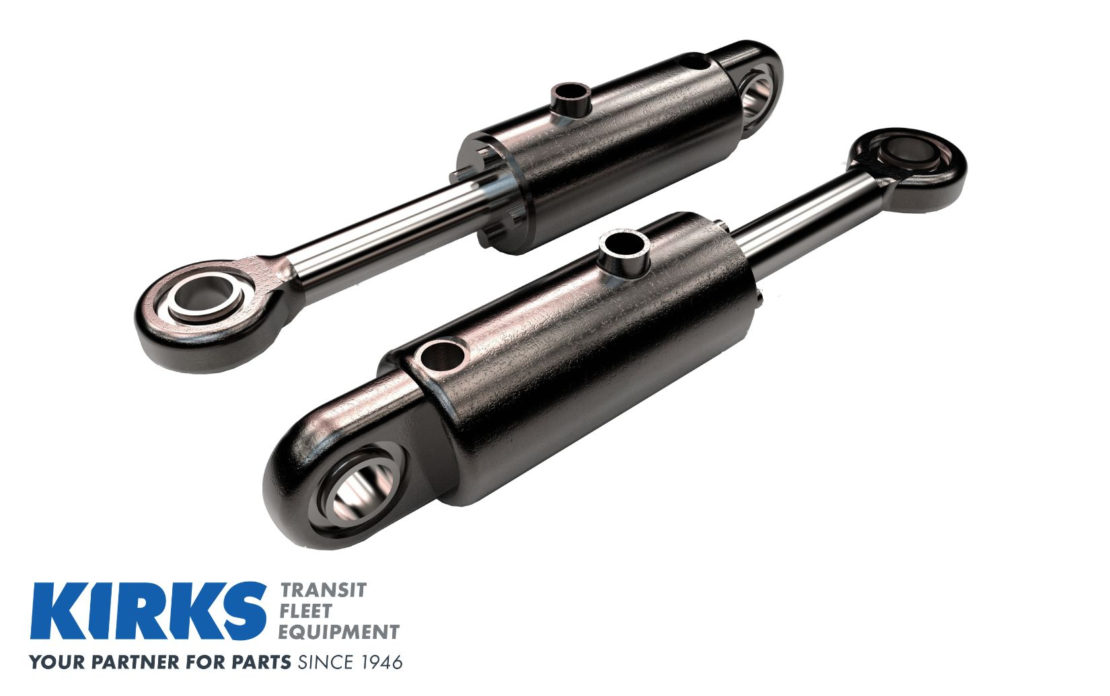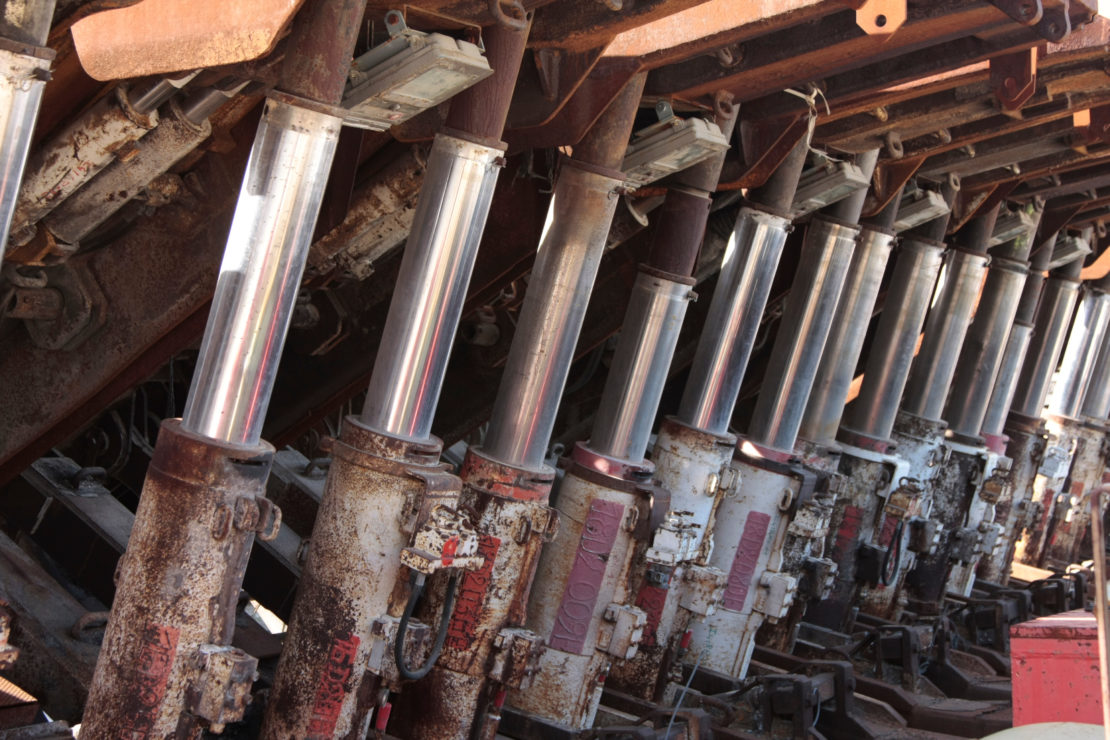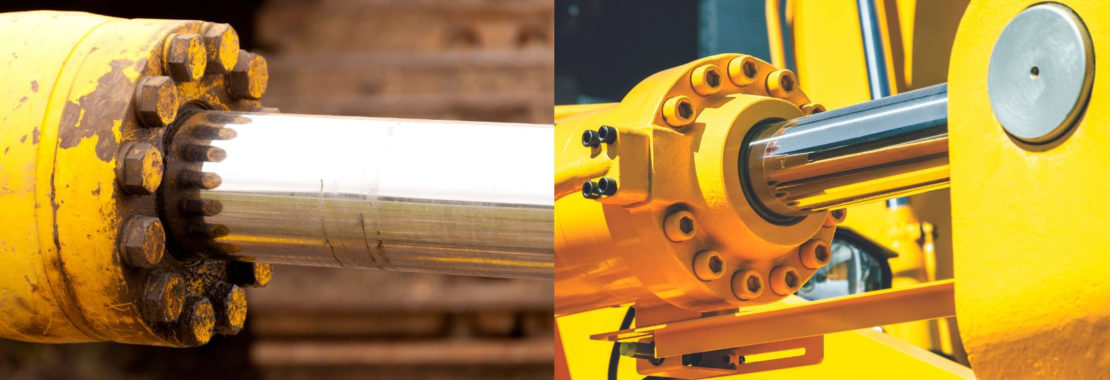
When Industrial Hydraulics Fail: Replace, Remanufacture, or Repair?
How can you determine the quality of hydraulic repairs?
What is the difference between repairing and remanufacturing hydraulics?
How do you determine whether to repair, remanufacture, or replace with new?
Hydraulic systems are essential in every industrial market, from off-highway construction and agriculture equipment to fork-truck and waste removal fleets. They provide power to heavy equipment, motors, pumps, steering assemblies, and more.
We rely upon them daily, and operations come to a halt when a hydraulics system breaks down. Maintenance managers must decide whether to buy new, repair or remanufacture failed hydraulics and get production back in gear.

Hydraulic Basics
Hydraulics uses the power of pressurized fluid to provide high-power functions required by industrial machinery. From small applications to heavy-duty loads, hydraulics does the heavy lifting needed for material handling, earthmoving, construction, forestry, and more.
Hydraulic cylinders are the central component of many hydraulics systems and are forecasted to increase in demand. According to market research firm DataIntelo:
“The Global Hydraulic Cylinders Market size is expected to witness a [compound annual growth rate] of 5.2% during the forecast period from 2021-2030. The key factors driving this growth are an increase in demand for industrial equipment, mobile equipment, and construction activities across various industries such as mining, oil & gas, civil engineering & construction industry.”
DataIntelo: Global Forecast from 2022 -2030
Industrial hydraulic systems have five vital parts: cylinders, pistons, piston rods, shafts, and seals. The cylinder houses the hydraulics, and its interior is referred to as the shaft. Inside the shaft, a piston partitions the cylinder chamber into two sections. This piston is attached to a piston rod and is fitted with seals.
When in action, the cylinder fills with hydraulic fluid, which puts pressure on the piston and forces it to move. The seals on the piston and rod keep fluid from leaking and maintain steady pressure while allowing the piston to move along the cylinder smoothly. As the piston moves, the rod moves with it, propelling the motion for automation and high-powered control.
Hydraulics fails from fluid contamination.
Maintenance technicians focus on controlling hydraulic fluid contamination because up to 90% of performance issues and failures can be tied to fluid degradation. Even with exceptional maintenance, hydraulic systems will eventually fail and require repair or replacement.
Through daily use, unavoidable impurities like dirt, dust, water, and other debris contaminate the hydraulic fluid. These invading particles cause abrasion during use, wearing down the shaft, damaging the seals, and scratching the piston and rod.
Wear-and-tear on seals and pistons increases the potential for contamination and fluid leaks. Leaking hydraulic fluid weakens the system’s pressure and leaves machinery without the power it needs to perform.
Improper use will accelerate hydraulic breakdowns.
Exposure to the elements will also allow dirt, dust, and other particles to find their way into the hydraulics assembly. It’s not uncommon to see heavy hydraulic machinery stored outside with piston rods in the extended position. This allows impurities to build up on the rod and contaminate hydraulic fluid during use.
When not in use, chrome piston rods remain extended, and the chrome will incur damage such as scratches and rust. These scratches, rust, and stubborn particles will break down the seals quickly, limiting performance and requiring costly repairs or parts purchases.
Running hydraulic equipment too hot or cold will negatively impact the viscosity of the hydraulic fluid. This requires more energy (diesel or electric) and leads to premature failure.
Lastly, hydraulics might simply fail due to heavy workloads. If the load exceeds the hydraulic system is rated for, pistons or rods might bend or outright break.

Poor maintenance will expedite hydraulic failures.
Routine maintenance tasks, like changing filters and fluid, prevent the buildup of impurities and keep hydraulics at maximum performance. Dirty filters and contaminated hydraulic fluid will fast-track hydraulic failure.
To prevent hydraulic failures, KIRKS recommends regular maintenance of hydraulic systems. Maintaining hydraulic systems saves money, reduces labor costs, and saves time on the job site!
Training operators and maintenance technicians to follow the manufacturer’s recommendations, from initial startup to maximum loads, will also keep equipment performing better longer.
What are the options when Hydraulic Systems Fail?
Hydraulic failures can pose a challenge for maintenance managers and purchasing departments. They need to find quality, cost-efficient hydraulics replacements that get equipment running again quickly.
Repairing damaged parts, remanufacturing used parts, or buying new parts provide different advantages based on customer priorities.
- Buying New Parts: When higher cost is not a factor, and the parts are available, OEM parts can be the perfect solution. However, new parts may be difficult to find at times. The OEM may no longer manufacture them, or they may be unavailable in time due to supply chain issues.
- Repairs: Budget demands and a lack of available new parts may make repairing hydraulics an attractive option. These repairs may involve draining and cleaning the cylinder, replacing seals, and refilling the fluid – a process some call “repacking.”
While repacking may be a quick fix, it often doesn’t solve the root problems that led to the failure, namely piston damage. Repair shops that do not have machine tooling capabilities are not equipped to remove and rechrome the pits and scratches on the rod and shaft. This means the subsequent breakdown will happen sooner.
- Remanufacturing: Longevity, quality, and cost-efficiency can be achieved through remanufacturing. Remanufacturing takes used cores and restores them to like-new condition to meet all OEM specifications. This thorough process requires technical experience and machining capabilities. Remanufacturing will save hundreds or thousands of dollars and delivers precisely the part required.

Choosing the right option for your application
Recent supply-chain issues have made new parts unavailable, and the complexity of the parts-number system may make it unclear what parts are needed. Repairs may only provide temporary solutions. Remanufacturing may not seem possible for broken and unusable components.
When none of these options provide a complete solution, KIRKS has another way to provide precisely the parts required for hydraulics equipment: custom manufacturing. Our custom manufacturing service is the latest way we’re fulfilling the promise we’ve made to our customers since 1946: if we can’t get parts, we’ll find a way!
When your hydraulics fail, we know it can be challenging to know what you need and how you can get it. Whenever you’re unsure, call KIRKS. We’ll help you make the right choice for your application, time frame, and budget. Our promise to you is that we’ll take the time to do it right – or better—the first time!
——–
KIRKS is your partner for parts!
KIRKS provides the hydraulics solutions you need to keep your equipment running. Whether you need new or remanufactured parts, a KIRKS parts specialist will work with you to navigate the parts maze and find the best solution.
All KIRKS Reman and Custom Fabricated Hydraulic Systems are backed by KIRKS Approved Equal Seal and 1 Year in-service warranty.
We’re making it easy, get everything you need in a single purchase order– all your parts for services and maintenance, from hydraulics filters to shop towels! Not already a KIRKS customer? Register here, or call KIRKS today.
